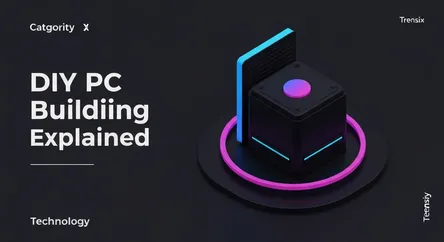Technology
DIY PC Building Explained

Ever wanted to build your own computer? Discover what DIY PC building is, why it's so popular, and how it offers unparalleled customization.
What is it?
DIY (Do-It-Yourself) PC building is the process of selecting individual computer components—such as the motherboard, CPU, GPU, RAM, and storage—and assembling them into a fully functional desktop computer. Unlike purchasing a pre-built system from a major brand, this approach gives the builder complete control over every part of their machine. It transforms the computer from a simple appliance into a personalized project, tailored specifically to the user's needs, budget, and aesthetic preferences.
Why is it trending?
The trend is fueled by a desire for customization and better value. Gamers, content creators, and professionals often require specific performance levels that pre-built systems can't offer at a reasonable price. Building your own PC can be more cost-effective and allows for a higher-quality selection of parts. The wealth of online tutorials, guides, and supportive communities has also demystified the process, making it accessible to beginners and hobbyists who enjoy the challenge and satisfaction of creating something with their own hands.
How does it affect people?
DIY PC building empowers individuals by giving them total control over their technology's performance, cost, and longevity. The process fosters a deeper understanding of computer hardware and develops valuable technical skills. It allows for targeted upgrades over time, meaning you only need to replace individual components rather than the entire system. This not only saves money but also reduces e-waste. Ultimately, it provides users with a powerful, custom-tailored machine and a profound sense of accomplishment.